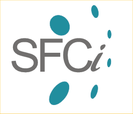Schrödinger pre-conference workshopThe company Schrödinger will animate a pre-conference workshop on thursday morning (from 8.30 to 12.00) in the Conservatoire National des Arts et Métiers.
The inscription is free but required since this pre-conference workshop is limited to 20 people.
Introduction to Maestro : In the first part of this tutorial we will learn how to import and export molecules into the Project Table. With structures in a project, we will then create molecules from existing entries, modify molecules with the 3D Builder, and draw molecules using the 2D sketcher. Once small molecules are in place, learn how to generate conformations and align them using different methods. We will explore how to superimpose a ligand onto a protein-ligand complex and superimpose proteins by secondary structure or by the binding site. With information from ligand and protein alignments, learn how to modify a small molecule in the binding site, visualize interactions, and use the Lead Optimization Docking panel to score new design ideas. We will also learn how to use the Maestro interface for your projects. We will cover topics such as: - In-depth look at visualization and styling options - Modifying small molecules and creating ligand libraries - Structure alignments and lead optimization techniques Building QSAR Models with AutoQSAR/DeepChem In the second part of this tutorial you will learn how to use the AutoQSAR panel to set up, create, interpret and apply QSAR models using Machine Learning and DeepChem (deep learning) methods. The principal advantage of DeepChem-based models over traditional AutoQSAR models is that they can take advantage of much larger data sets (hundreds of thousands of training examples or more), whereas traditional AutoQSAR is limited to 5000 points. Performance on smaller data sets requires care and will vary, but can occasionally outperform traditional AutoQSAR. We will build a deep-learning model using the same mutagenicity data from the AutoQSAR tutorial, and draw a direct comparison between the methods and illustrate some common pitfalls. |


